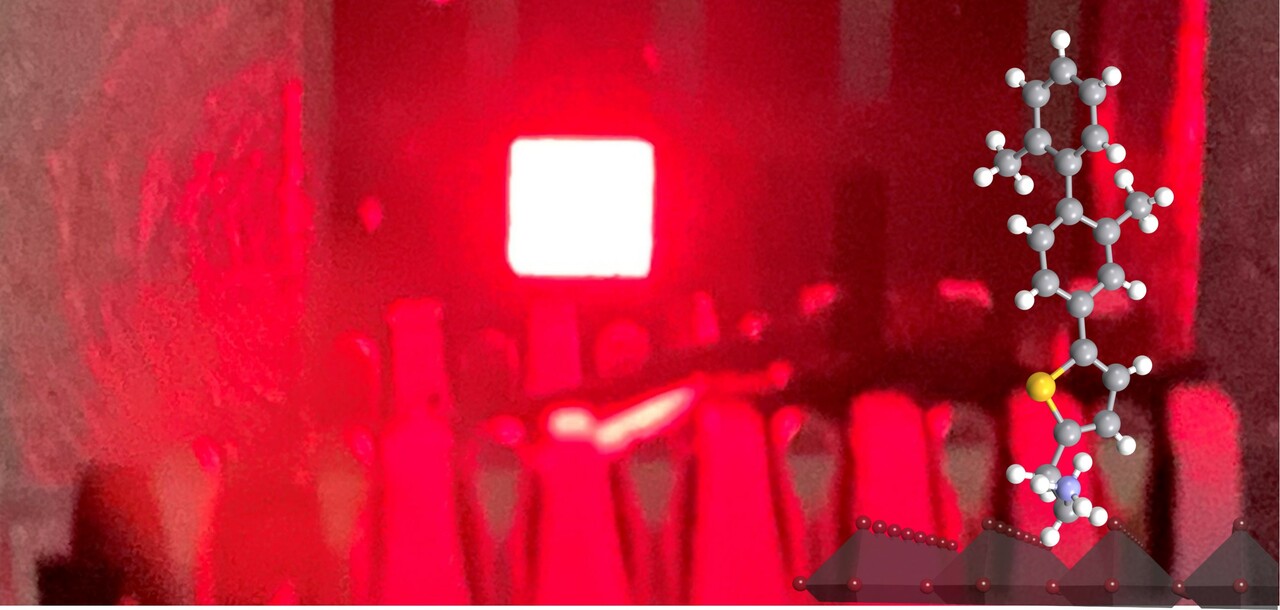My interest in organic-inorganic hybrid perovskite dates to 2015 when I was a Ph.D. student working on organic nanolaser projects. At that time, hybrid perovskites were emerging candidates for light-emitting diodes (LEDs) and nanolasers because of their outstanding optoelectronic properties with remarkable tunability (Nat. Nanotechnol. 9, 687 (2014); Nat. Mater. 13, 476 (2014); Nat. Mater. 14, 636 (2015)). I was really impressed by the development of perovskite-based optoelectronic devices in the following years. When I was about to graduate, I realized that perovskite LEDs were very promising for commercialization and also held great potential in achieving electrically driven lasers.
I was lucky enough to join Prof. Letian Dou’s research group at Davidson School of Chemical Engineering, Purdue University as a postdoc. research associate in 2019 and started to work on perovskite LEDs. Inspired by recent work in our group on organic ligand design for novel two-dimensional (2D) perovskites (Nat. Chem. 11, 1151-1157 (2019)), I decided to rationally design and synthesize organic molecules to benefit charge injection, enhance the stability, and passivate the defects in perovskite LEDs, all of which eventually led to two successful projects (Angew. Chem. Int. Ed. 60, 8337-8343 (2021); ACS Nano 15, 6316-6325 (2021)). Even though the device performance I demonstrated in these works is not impressive enough, I really acquired a deeper understanding of the field afterward. To further advance the device performance in terms of both external quantum efficiency and stability, quasi-2D perovskites came to my mind regarding their superior optoelectronic properties with enhanced environmental stability compared to their 3D counterparts. However, the performance of quasi-2D perovskite LEDs back then is likely limited by the formation of multiple quantum wells with uncontrollable phase distribution in the films. This phenomenon was typically called “phase separation” or more specifically described as “phase disproportionation” by us.
To make a phase purer quasi-2D perovskite film, we have to answer two related fundamental questions. The first question we faced was to understand the origin of this phase disproportionation issue. As has been discussed before (Nat. Commun. 9, 3541 (2018)), phase separation is a spontaneous process for typical quasi-2D perovskites because n = 1 phase (Fig. 1a) is enthalpically favored and a mixture of n-phases is entropically favored. In other words, the formation of a film with broad phase distribution is unavoidable because it is a thermodynamically favored process. Considering mass transport (kinetic factor) must happen during phase disproportionation and the ionic feature of perovskite materials, we speculated that the ligands might control the kinetics and thus phase purity by modulating the ion diffusion barriers or defect densities through which ion diffusion can occur. The next challenge was designing novel organic ligands to inhibit ion migration and reduce defect density as much as possible. Recent works have demonstrated that conjugated ligands (e.g., TEA) can inhibit ion diffusion within and between 2D perovskite heterostructures (Nature 580, 614-620 (2020); Nat. Nanotechnol. 16, 584-591 (2021)). To better suppress ion diffusion, we innovatively designed and synthesized two new organic conjugated ligands, PPT' and PPT. The design of these ligands was motivated by their relatively large π-systems, which is already an established factor for suppressing ion diffusion, and their distinct cross-sections due to the increased steric barrier. This latter factor may lead to better solution processability and unusual phase control behaviors, which is yet to be explored.
Molecular dynamics (MD) simulations were carried out to compare the free energy barrier of interlayer I- diffusion in perovskites based on different ligands, which provide means to clarify the ligand effects on phase distribution control. By conducting a series of thin film studies combined with in-situ characterizations, we found that bulkier ligands can better suppress ionic transport, thus enabling perovskite thin films with narrowed phase distributions (i.e., higher phase purity), reduced defect densities, and enhanced radiative recombination efficiencies (Fig. 1b, c). Consequently, we are able to achieve efficient and stable deep-red light-emitting diodes with a peak external quantum efficiency of 26.3% (average 22.9% among 70 devices and crosschecked). To the best of our knowledge, this is the highest efficiency reported so far for a quasi-2D halide perovskite LED in the red region. Our devices also exhibit wide wavelength tunability and improved spectral and phase stability compared with existing quasi-2D perovskite light-emitting diodes.
 Fig. 1| a, The schematic illustration for the general structure of quasi-2D perovskites and the chemical structures of large organic ligands, BA, TEA, PPT', and PPT, studied in this work. b,c, BA and TEA (b); PPT' and PPT (c) based crystallization schemes summarized from a series of characterizations.
Fig. 1| a, The schematic illustration for the general structure of quasi-2D perovskites and the chemical structures of large organic ligands, BA, TEA, PPT', and PPT, studied in this work. b,c, BA and TEA (b); PPT' and PPT (c) based crystallization schemes summarized from a series of characterizations.
Our work provides critical insights into the molecular design and crystallization kinetics of low-dimensional perovskite semiconductors for light-emitting devices. We believe this molecular engineering strategy could be expanded to other perovskite-based optoelectronic devices. This work also suggests that there is a bright future in transforming perovskite LED technology into real-world applications.
Read our paper in Nature Communications: https://www.nature.com/articles/s41467-023-36118-7.






Please sign in or register for FREE
If you are a registered user on Research Communities by Springer Nature, please sign in